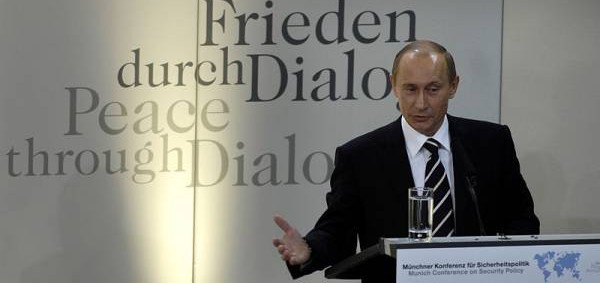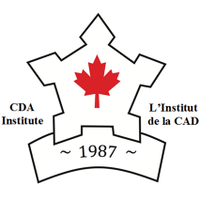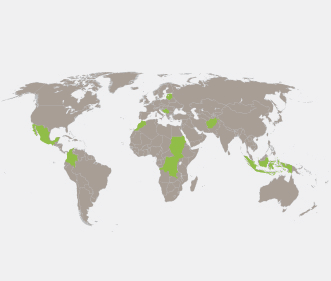We are republishing on the SSR Resource Centre the first contribution by Centre for Security Governance Senior Fellow David Law - who is also a CDA Instiute Security & Defence Blogger. In this five-part series originally published on the CDA Institute blog:The Forum, he explores the development and scope of what he terms World War IV. This series is based on David Law’s presentation at the CDA Institute Roundtable “Knocking on the Door of World War IV,” held in Ottawa on 10 June 2015.
The Ukraine crisis has given rise to the view that we may be entering a new Cold War. The use of this term raises all sorts of questions. Here are just a few. How does this possibly new Cold War compare with the old Cold War? What is a cold war and how does it differ from a hot one? And can a cold war become a hot one and if so, how?*
The Cold War between the United States and Soviet Union that dominated most of the second half of the twentieth century was in many ways like World Wars I and II. They all involved a significant number of the then existing states, drawing in all regions of the world to a greater or lesser extent. They all endured over a generation – and sometimes two. They all displaced, wounded, maimed and killed tens of millions of people. This was as true of the Cold War’s many wars (from Korea to Vietnam to Afghanistan), as the world wars that preceded it.
Each of these wars was driven by an effort of one or more powers to transform the prevailing system of international power to its advantage.
Thus, in World War I, the key contest saw the authority of long-established empires – Austro-Hungarian, German, Ottoman, and Russian – being threatened by the new nationalisms that had emerged on their territory in the nineteenth century. But the Great War also put Great Britain and France on the front line, inflicting on both imperial powers huge casualties even as they emerged as victors alongside a rising America. Their empires would remain more or less intact until after the next world war.
World War II pitted the world’s then more democratic states against the authoritarian nation-states that sought to aggrandize their power. The main aggressors in this story are generally identified as Germany, Italy, and Japan, but the effort to extend one’s borders and control over other nations was far more widespread than that – one only need to look at the behaviour of numerous states in Eastern Europe and the Balkans, and not least the Soviet Union prior to the Nazi invasion.
The Cold War was essentially a contest between two socio-economic and political systems: democratic capitalism and totalitarian communism, each vying for global domination. So, the twentieth century knew no less than three world wars, whereby the third was just as much deserving of a number as were World Wars I and II. In my book, the Cold War was World War III.
If a world war is essentially about an effort on the part of various actors to challenge the internationally established order, then we should probably also rethink the start and end points of these conflicts. Thereby, we also need to take into account the inter-state altercations that helped build momentum towards major war among the main actors, as well as the subsidiary conflicts that were spawned in its wake.
By this logic, the opening salvo in World War I was probably the Russo-Japanese War of 1904-05. It was followed by several other wars – and in particular the two Balkan Wars of 1912–1913, which established fronts that would be in place in 1914. Similarly, this first great war of the twentieth century gave rise to several other conflicts that continued or broke out after the 1918 Armistice, including the Russian Civil War of 1918–21 and the Greek-Turkish war that began in 1919 and ended with the Treaty of Lausanne in 1923. So seen, World War I lasted 19 years.
Similarly, one can consider that World War II began not in 1939 but in 1932 when Japan marched into Manchuria, and it ended not in 1945 but in 1954 when the last of the Indochina Wars unleashed by this great conflict came to an end. This would make World War II 22 years old at its conclusion.
And what was the starting point of the Cold War, or what I have suggested should be designated World War III? In my view, it was in Cuba in 1958. This was the first major challenge that was launched to the world order established by the previous world war. It was only with the end of the Yugoslav Wars of Succession in 2001 that it was really laid to rest, for a total of 43 years. In between lay the decolonialisation process that saw the dismantling of the world’s remaining empires in Africa, Asia, and Europe and the more than doubling of the number of states in the international community. Their emergence was more often than not accompanied by civil wars coloured by the ongoing East-West rivalry.
World War III differed from its two predecessors in one very important respect. While it proved to be a fight to the finish between the US and the USSR, the two superpowers did not attack each other frontally. That said, the Cold War could have very easily turned hot if the Cuban Missile Crisis of 1963 had gone nuclear.
As for the new Cold War, it can be said to have started in 2007 when Russian President Vladimir Putin made a speech at the Wehrkunde international security conference in Munich, in which he made a blistering attack against the United States for provoking a new arms race, destabilizing the Middle East, undermining international institutions, expanding NATO and supporting democratic revolutions in the Commonwealth of Independent States. He concluded by insisting that Washington accept Russia’s demand for equality, in practical terms giving Moscow a free hand throughout the former Soviet Union, and appealing to other countries to join Russia in an effort to end what he called the American effort to create a unipolar world. The following year brought the Georgian-Russian war and Russia’s occupation of South Ossetia and Abkhazia, two self-proclaimed republics that had broken away from Tbilisi at Moscow’s urging.
The new Cold War differs significantly from past world wars. All three of the previous conflicts were conducted to a greater or lesser extent on all continents. The new Cold War is for the time being local and covert. Russia denies any military involvement in Eastern Ukraine and has put itself forward as a mediator between Kyiv and the two self-proclaimed republics that have emerged to challenge the sovereignty of Ukraine’s central government.
The new Cold War is, however, only part of the strategic situation currently taking shape in the world. A second story concerns the rise of ISIS in several countries of the Middle East and North Africa, where conflict, unlike in the Euro-Atlantic theatre, is overt. Probably, the jihadists of Al-Qaeda and the Islamic State would see their conflict with the prevailing powers in their part of the world and with the westerners that have helped sustain the latter as a world war going back at least two decades.
A third story is about China’s rise in its region. Here conflict is neither covert nor overt but for the time being latent. What was this story’s opening chapter? It probably occurred with the rise of Xi Jinping as of 2012. Whether his ongoing effort to bolster the role of the autocratic Chinese communist party in an economy that increasingly beats to a capitalist drum announces the onslaught of conflict in Asia is anybody’s guess. But if it does, then World War IV will have taken hold in Asia as of 2012.
How this all pans out will determine the kind of world we live in as the twentieth-first century unfolds. For more, read my next blog post in this series.
What’s in a World War: The three rings of conflict – Part 2
What’s in a World War: Knocking on the door of World War IV – Part 3
What’s in a World War: Strong points of the West – Part 4
What’s in a World War: Challenges facing the West – Part 5
*The approach taken in this blog post to understanding the causes and duration of world wars was developed by Hermann F. Achminow in a book that appeared in Europa-Prisma Verlag in 1983 under the title of “Am Grossen Krieg “vorbeischleichen”?
David Law, a former Head of the NATO Policy Planning Unit, is currently a Senior Associate with the Kitchener-based Security Governance Group, and a Senior Fellow with it sister organization, the Centre for Security Governance. (Image courtesy of US Department of Defense.)
This post first appeared on the CDA Institute blog:The Forum and is republished with permission from the CDA Institute.
Tags: geopolitics







 Visit the Centre for
Visit the Centre for